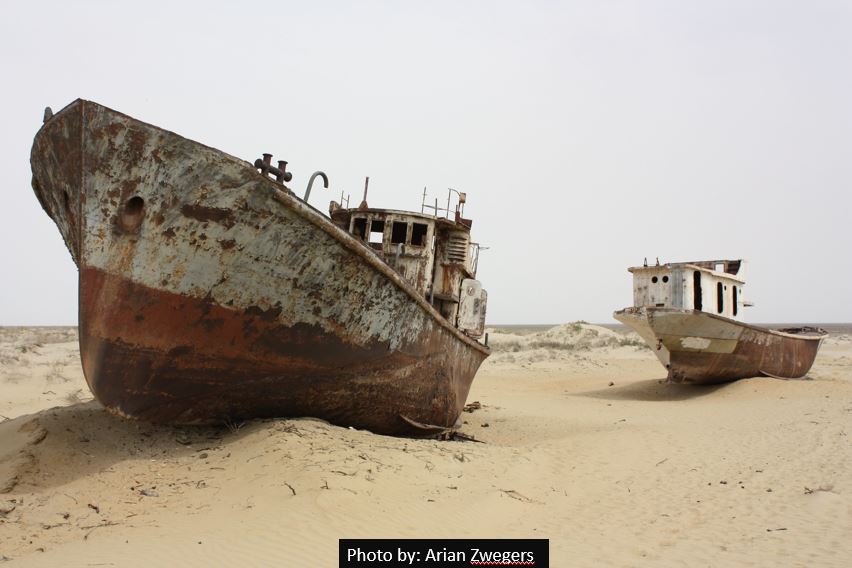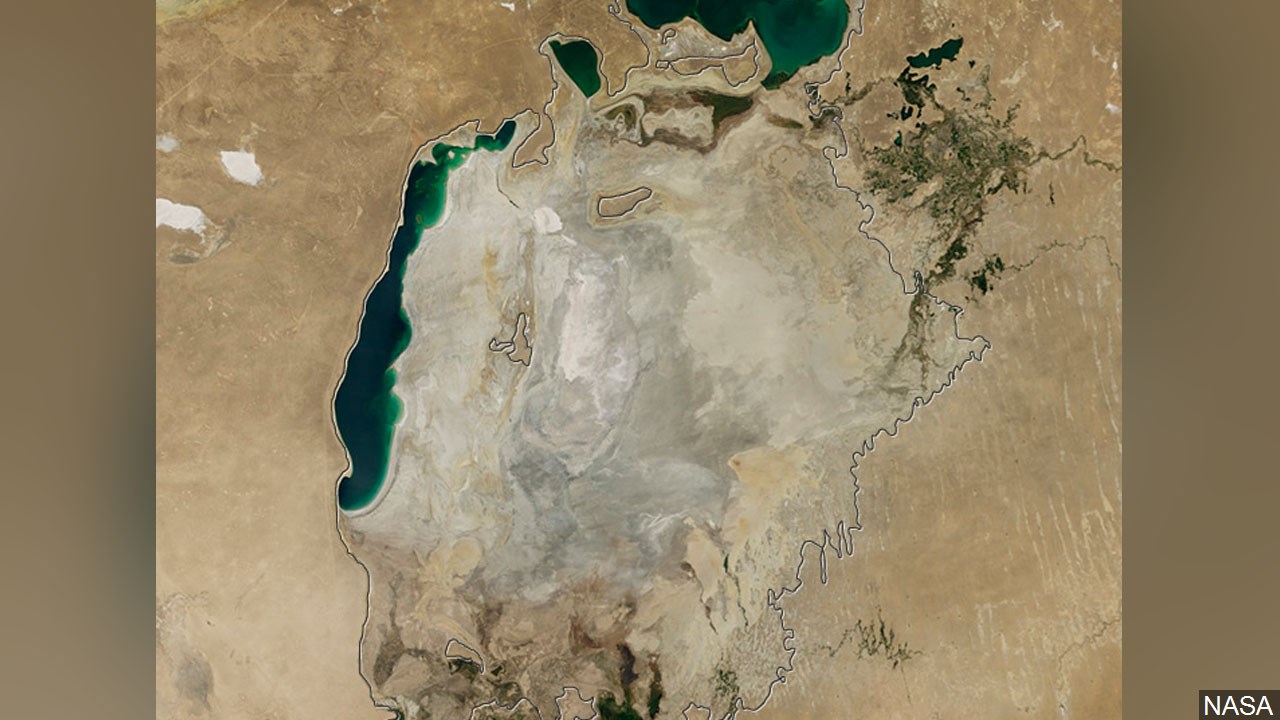
There’s a place in this world where you can find many ships sitting in the middle of a large desert. How did these end up there? It’s the sad story of the Aral Sea which once was the 4th largest lake in the world as recently as 1960.
The name of the sea comes from the many islands that were found through the lake and the fishing industry was prominent all around it. The remnants of the Aral Sea straddles the countries of Uzbekistan and Karakhstan.
This lake is fed with water from two major rivers, the Syr Darya and the Amu Darya. With these rivers as an input and no significant outflow, the Aral was a large pool of freshwater.
Back in 1960, the Soviet Union diverted some of the waters from these rivers to make a desert into farmlands for cotton. In fact, as the Soviet Union fell apart, the country of Uzbekistan became the world’s leader in cotton.
These fields required more and more water. The problem though is that without as much water coming in the lake started shrinking. With less moisture in the surrounding area, the area was now prone to turning hotter each day which started feedback that made the lake shrink at an alarming rate.
Since water evaporates and minerals don’t, the salinity of the water started to increase rapidly and that also started to reduce the fish population dramatically. This also caused the collapse of the entire ecosystem which then also caused feedback to heat and dry the area. All that is left of the fishing industry in areas is the leftover boats in a desert.

With the dawn of the satellite era, we could not track the loss of this body of water from the sky. By the year 2000, the Aral sea was down to a small fraction of its original size and split the sea into two halves that were totally detached. You can see animation from NASA’s Earth Observatory.
In 2005, there was the last digit effort to save part of the body of water. Kazakhstan to save the northern part of the sea, which is now called the North Aral. This has helped to increase the depth of the water and bring back some of the fish population.

By 2014 the Amu Darya stopped it’s flow altogether to the region and a large chunk of the was lost to desert sand.

It’s too late to turn around this lake, and there are some other examples of similar stories across the world, but it’s a lesson we can use as we move forward. Some environmental decisions can change a landscape for good.
If you have a topic you would like to be discussed in That’s Cool, email Joe at jmurgo@wtajtv.com.


